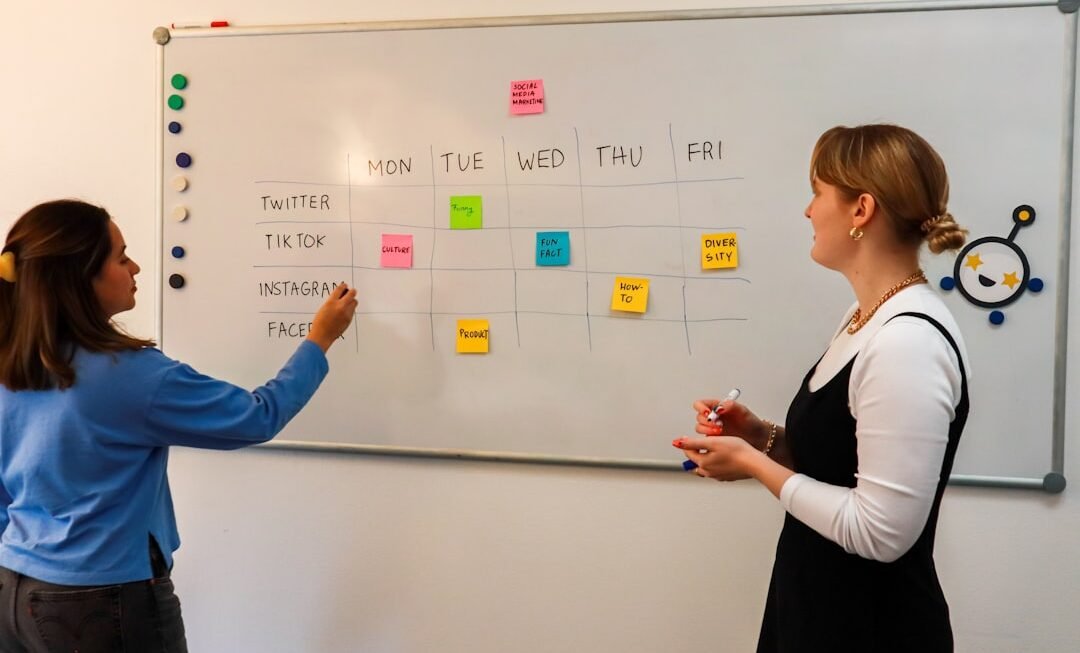Intelligent Tutoring Systems (ITS) represent a significant advancement in the field of education technology, merging cognitive science with artificial intelligence to create personalized learning experiences. These systems are designed to provide immediate feedback and tailored instruction to students, adapting to their individual learning styles and paces. Unlike traditional educational methods, which often employ a one-size-fits-all approach, ITS leverage sophisticated algorithms to analyze student performance in real-time, allowing for a more nuanced understanding of each learner’s needs.
This adaptability is particularly crucial in virtual classrooms, where diverse student populations may have varying levels of prior knowledge and engagement. The evolution of ITS can be traced back to the early days of computer-assisted instruction, but recent advancements in machine learning and data analytics have propelled these systems into a new era. Modern ITS are capable of simulating human tutoring by employing techniques such as natural language processing and user modeling.
This enables them to not only assess a student’s current understanding but also predict future learning trajectories. As educational institutions increasingly adopt online learning environments, the integration of ITS into virtual classrooms has become a focal point for enhancing educational outcomes and fostering student engagement.
Key Takeaways
- Intelligent Tutoring Systems (ITS) use artificial intelligence to personalize learning for students in virtual classrooms.
- ITS can benefit virtual classrooms by providing personalized feedback, adapting to individual learning styles, and improving student engagement.
- Personalization in ITS involves adapting content, pacing, and feedback to meet the needs of each student, leading to more effective learning outcomes.
- Artificial intelligence plays a crucial role in ITS by analyzing student data, identifying learning patterns, and providing real-time feedback and support.
- Challenges and limitations of ITS include the need for extensive data and content, potential biases in AI algorithms, and the requirement for ongoing maintenance and updates.
Benefits of Intelligent Tutoring Systems in Virtual Classrooms
The integration of Intelligent Tutoring Systems into virtual classrooms offers numerous benefits that enhance both teaching and learning experiences. One of the most significant advantages is the ability to provide immediate feedback. In traditional classroom settings, students may have to wait for their assignments to be graded before receiving any insights into their performance.
In contrast, ITS can analyze responses in real-time, offering instant corrections and suggestions that help students understand their mistakes and learn from them immediately. This immediacy not only reinforces learning but also keeps students motivated and engaged. Another key benefit of ITS is their capacity for scalability.
In a virtual classroom, educators often face the challenge of managing large groups of students with diverse needs. Intelligent Tutoring Systems can accommodate this diversity by offering personalized pathways for each learner. For instance, if a student struggles with a particular concept, the system can provide additional resources or alternative explanations tailored to that student’s learning style.
This individualized approach ensures that all students receive the support they need, regardless of their starting point, thereby promoting equity in education.
How Intelligent Tutoring Systems Personalize Learning for Students
Personalization is at the heart of Intelligent Tutoring Systems, enabling them to cater to the unique needs of each student. These systems utilize data-driven insights to create customized learning experiences that adapt as students progress through their educational journey. By analyzing a student’s interactions with the system—such as response times, accuracy rates, and engagement levels—ITS can identify strengths and weaknesses, allowing for targeted interventions.
For example, if a student consistently struggles with algebraic concepts, the system can adjust its curriculum to focus more on foundational skills before advancing to more complex topics. Moreover, ITS can incorporate various pedagogical strategies to enhance personalization further. Some systems employ mastery-based learning, where students must demonstrate proficiency in a topic before moving on to the next one.
Others might use gamification elements to increase motivation and engagement, providing rewards or badges for completing tasks or achieving specific milestones. This flexibility in instructional design not only caters to different learning preferences but also fosters a sense of ownership over the learning process, empowering students to take charge of their education.
The Role of Artificial Intelligence in Intelligent Tutoring Systems
Artificial Intelligence (AI) plays a pivotal role in the functionality and effectiveness of Intelligent Tutoring Systems. At its core, AI enables these systems to process vast amounts of data and make informed decisions about instructional strategies. Machine learning algorithms analyze patterns in student behavior and performance, allowing the system to refine its teaching methods continuously.
For instance, if a particular instructional approach proves effective for a subset of students, the system can prioritize that method for similar learners in the future. Natural language processing is another critical component of AI in ITS. This technology allows systems to understand and respond to student queries in a conversational manner, simulating the experience of interacting with a human tutor.
By interpreting student input—whether it be through typed responses or voice commands—AI-driven ITS can provide contextually relevant feedback and guidance. This capability not only enhances the user experience but also fosters deeper engagement by making learning feel more interactive and responsive.
Challenges and Limitations of Intelligent Tutoring Systems
Despite their many advantages, Intelligent Tutoring Systems are not without challenges and limitations. One significant concern is the reliance on technology and data accuracy. For an ITS to function effectively, it must collect and analyze data accurately; any discrepancies can lead to misguided instructional decisions that may hinder rather than help student learning.
Additionally, issues related to data privacy and security are paramount, as educational institutions must ensure that sensitive student information is protected from unauthorized access. Another challenge lies in the potential for over-reliance on technology at the expense of human interaction. While ITS can provide valuable support and personalized instruction, they cannot fully replicate the emotional intelligence and empathy that human educators bring to the classroom.
The nuances of human communication—such as understanding non-verbal cues or providing encouragement during challenging moments—are difficult for AI systems to emulate. Therefore, striking a balance between leveraging technology and maintaining meaningful human connections in education is essential for maximizing the benefits of Intelligent Tutoring Systems.
Integrating Intelligent Tutoring Systems into Virtual Classroom Platforms
The successful integration of Intelligent Tutoring Systems into virtual classroom platforms requires careful planning and execution. Educational institutions must consider several factors when implementing these systems, including compatibility with existing technologies, training for educators, and ongoing support for students. A seamless integration process ensures that both teachers and learners can navigate the system effectively without encountering significant barriers.
One approach to integration involves creating a unified platform where ITS can coexist with other educational tools such as Learning Management Systems (LMS). This allows for streamlined access to resources and data analytics while providing educators with comprehensive insights into student performance across various domains. Additionally, professional development programs for teachers are crucial; educators must be equipped with the knowledge and skills necessary to leverage ITS effectively within their instructional practices.
Ongoing support mechanisms should also be established to address any technical issues or pedagogical questions that may arise during implementation.
Case Studies of Successful Implementation of Intelligent Tutoring Systems
Numerous case studies illustrate the successful implementation of Intelligent Tutoring Systems across various educational contexts. One notable example is Carnegie Learning’s MATHia software, which has been utilized in middle and high school mathematics classrooms across the United States. MATHia employs an adaptive learning model that personalizes instruction based on individual student performance data.
Schools that have integrated MATHia report significant improvements in student achievement, particularly among those who previously struggled with math concepts. Another compelling case study involves the use of Knewton’s adaptive learning platform in higher education settings. Knewton’s system analyzes student interactions with course materials and adjusts content delivery accordingly.
Institutions that have adopted Knewton have observed increased retention rates and improved academic performance among students enrolled in courses utilizing this technology. These examples underscore the potential of Intelligent Tutoring Systems to transform educational outcomes by providing tailored support that meets the diverse needs of learners.
The Future of Intelligent Tutoring Systems in Virtual Classrooms
Looking ahead, the future of Intelligent Tutoring Systems in virtual classrooms appears promising as advancements in technology continue to evolve.
As machine learning algorithms become more refined, ITS may be able to offer proactive interventions before students even realize they are struggling with a concept.
Moreover, as educational institutions increasingly embrace hybrid models that combine online and face-to-face instruction, ITS will play a crucial role in bridging gaps between these modalities.
Additionally, ongoing research into cognitive science will inform the development of more effective instructional strategies within ITS, ensuring that these systems remain aligned with best practices in pedagogy.
In conclusion, Intelligent Tutoring Systems hold immense potential for transforming virtual classrooms by providing personalized learning experiences that cater to individual student needs. As technology continues to advance and educational paradigms shift, ITS will undoubtedly play an integral role in shaping the future landscape of education.












